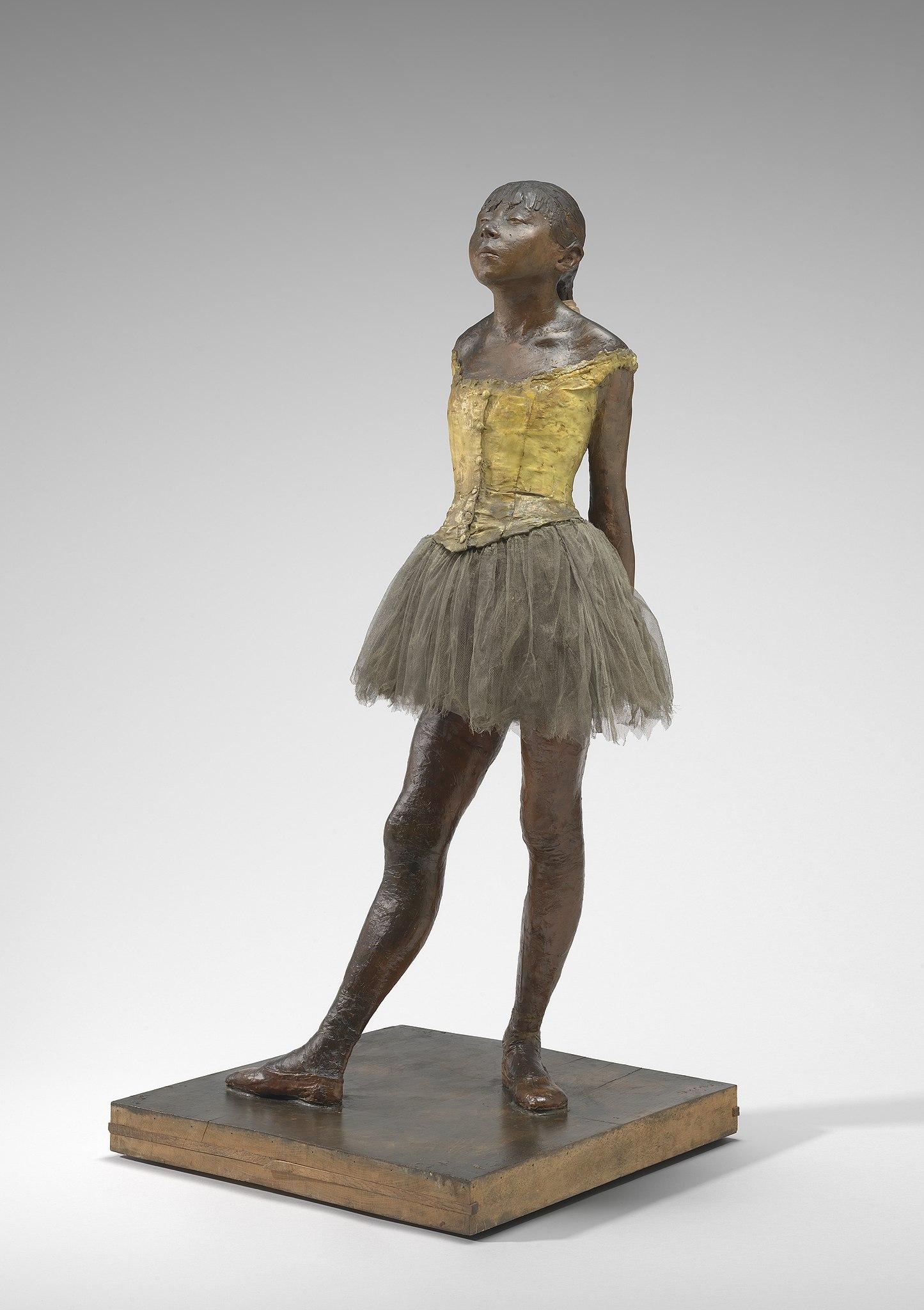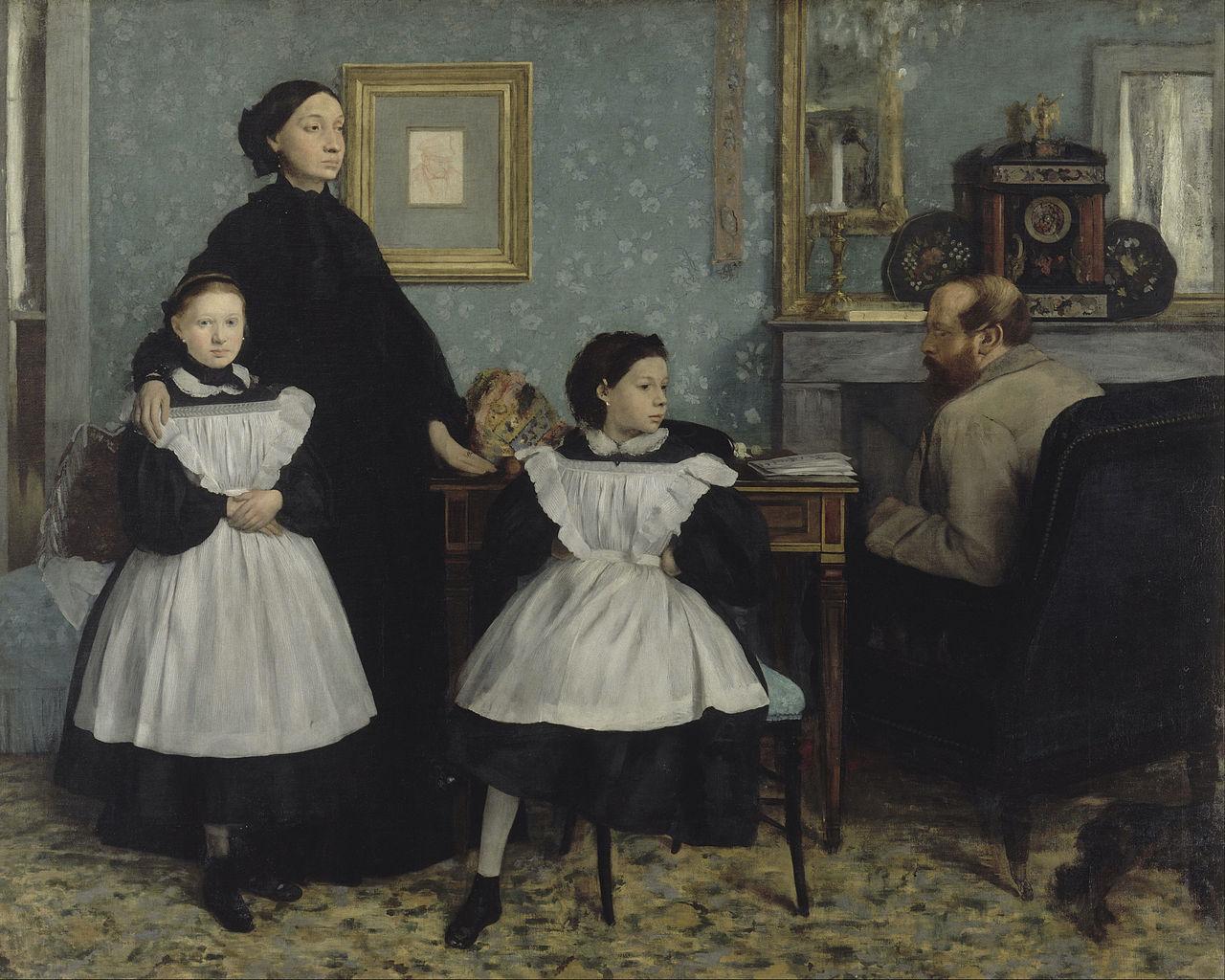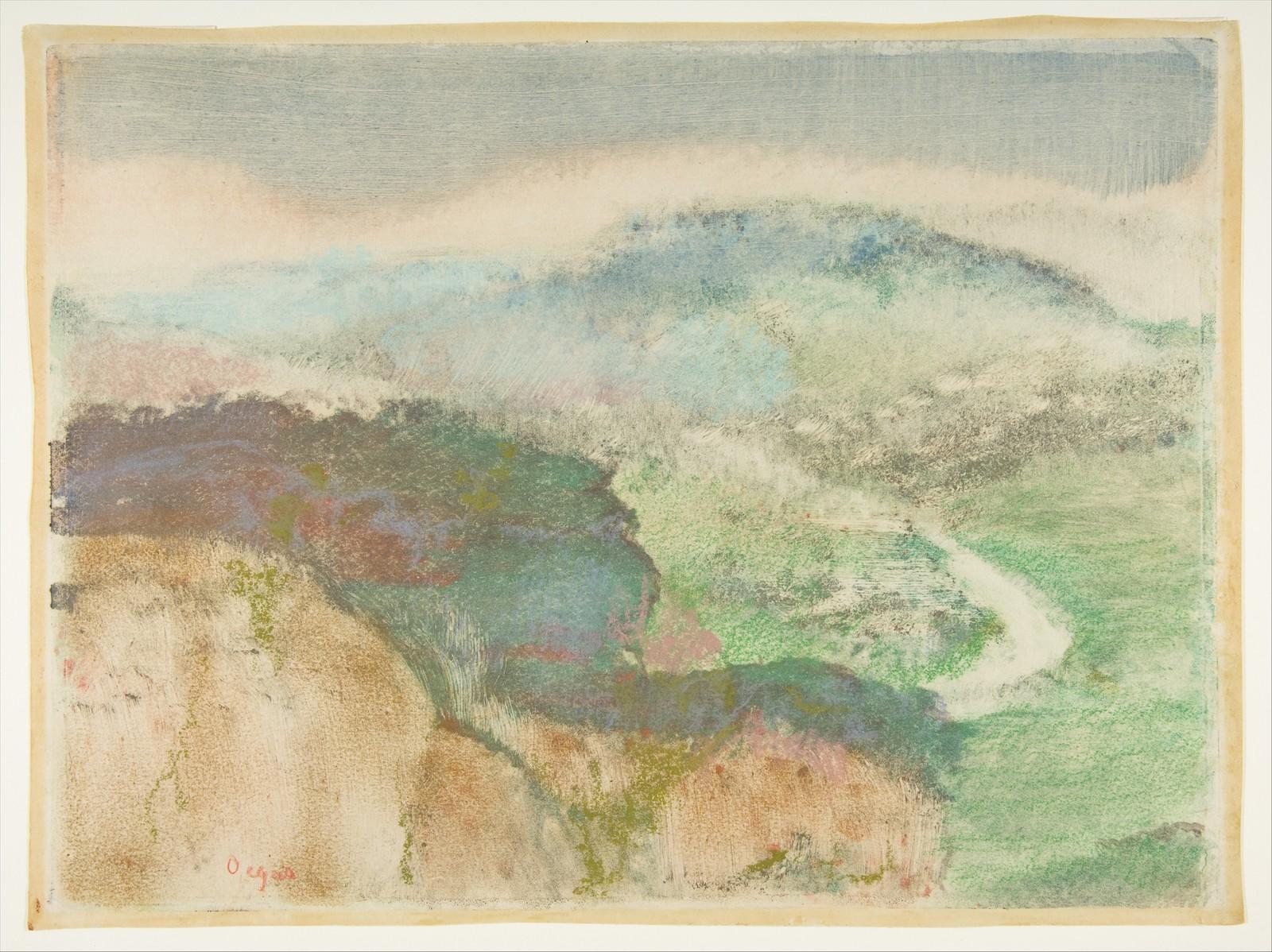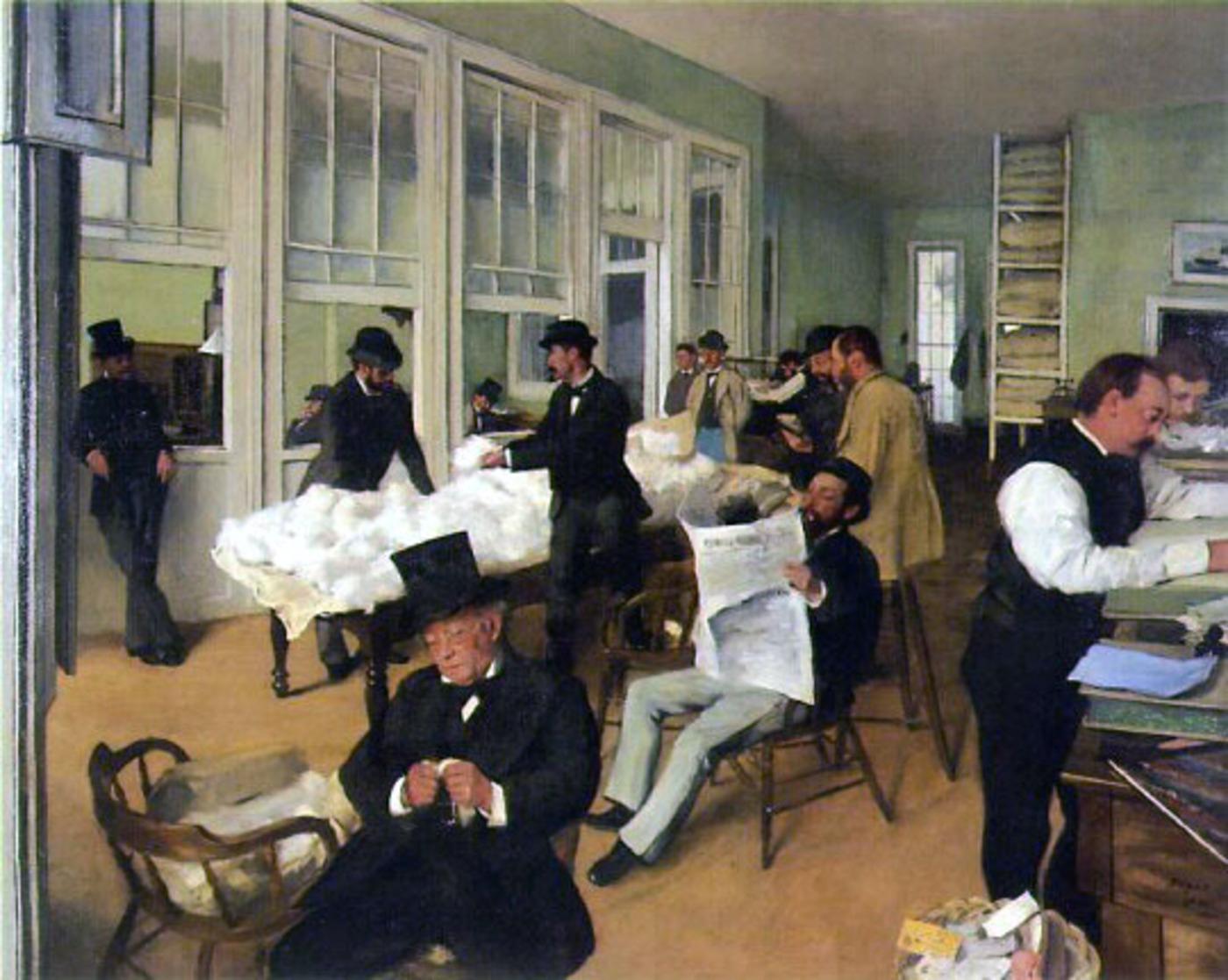Perhaps his most famous sculpture, The Little Dancer Aged Fourteen (1878-81) shocked contemporary viewers with its realism. One of over 1,500 dance-focused works created during his career, the thirty-eight-inch-tall sculpture wears an actual tutu and was cast approximately twenty-eight times.
Degas’ first-rate education instilled strong drawing skills. After a brief stint in law school, he studied art and traveled to Italy to copy Renaissance masters. Around this time, Degas also began one of his early masterworks, The Bellilli Family (1858-67). The painting depicts his aunt standing over her family, with a glimpse of the family dog in the lower right-hand corner. Though he initially set out to become a historical painter, Degas shifted to contemporary scenes after meeting Manet.

































